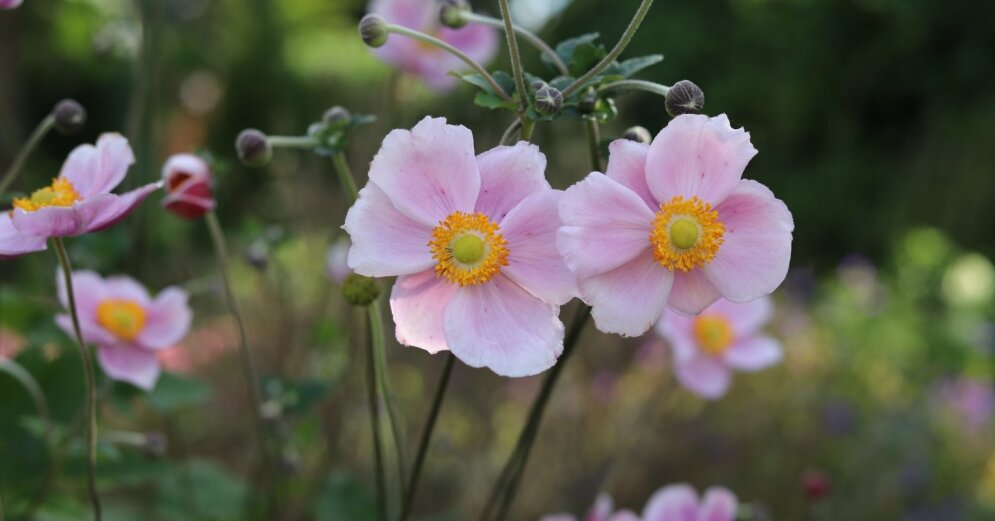While other flowers are already slowly hibernating, the white and pink fall anemones show their beauty in all their glory with simple yet beautiful blooms and elegant, slender flower stems swaying gracefully in the beds.
–
–
The content will continue after the announcement
Advertising
–
Although autumn anemones – Japanese anemones and Hubei anemones – are a great way to bring life and splendor to beds when most of the flowers have already bloomed, they are also a great material for cut flowers. Bees will also be delighted with the delicate garden flowers at the end of summer.
The name of the beautiful perennial comes from the Greek word “anemos”, which means wind. Ancient legends say that anemone flowers only open when the wind blows, so they like to grow in windy places. Autumn anemones really gather strength throughout the summer, so much so that when the first autumn breezes begin, they bloom into dense flowers despite the strong, cool autumn winds. Anemone cherries are beautiful all summer long, but they will delight you with their beautiful flowers from mid-August to early October. They will do great alone or with other perennials, especially asters, echinacea, gorse, sedum, and herbs such as miscanthus, common sedge, and widespread sporobolus.
Autumn anemones are perennials and can grow in one place for many years without losing their luster. First of all, you should be aware that in order for autumn flowers to bloom and bloom in all their glory, you will need to indulge their whims and provide humus-rich soil with good drainage in semi-shade, sufficient moisture, since in addition to fertilization additional, which will pay off with more abundant flowering. A layer of peat or compost mulch will also serve as an organic fertilizer. It is not recommended to fertilize perennials with nitrogen, which will result in an unnatural size and roundness of the plant, the plant will become more susceptible to disease, and its winter hardiness will also suffer.
The best time for sowing is in spring – from late April to mid-May, or in autumn – from late August to early September. It is best to transplant Japanese anemones in the spring, as they are more sensitive to cold. If they are to be planted again in the fall, they must be covered or mulched (for example with tree leaves) to avoid the unexpected damage of bare frost. On the other hand, if you plan to plant anemones in the spring, it is advisable to prepare the soil in time – digging in the fall to a depth of 30-40 centimeters, additionally incorporating neutralized peat or compost. Transplanting should be done carefully, because if the root system is damaged, the flower may not bloom even for several years.
During flowering, the dead, damaged and diseased parts of the plant, as well as the blossoming flowers, are cut off in the plantations. After flowering, the anemones are cut, leaving only shoots 5 to 10 centimeters long.
Six beautiful varieties of anemones that will grace the garden from mid-August to October:
Japanese anemone ‘Whirlwind’. Beautiful semi-full white flowers. The flowers reach a height of about one meter. It blooms in September and October.

–
Japanese anemone ‘Praecox’. Simple but very elegant bright pink velvety flowers. The flowers reach about 80 centimeters. Delight with its flowers from mid-August to October.
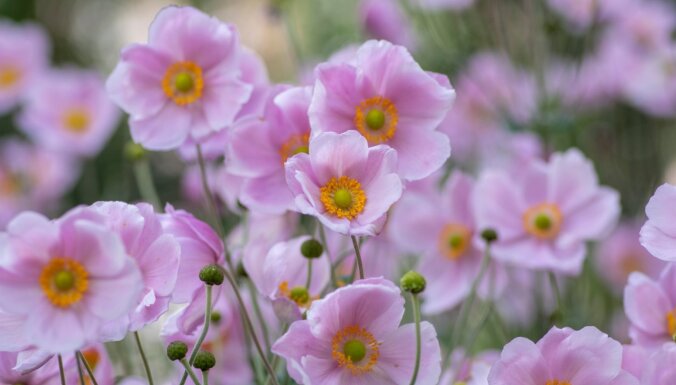
–
Japanese anemone “Honorine Jobert”. Pretty snow-white flowers. In good conditions, the inflorescence can reach a height of up to 120 centimeters. It blooms from late August or early September to October.
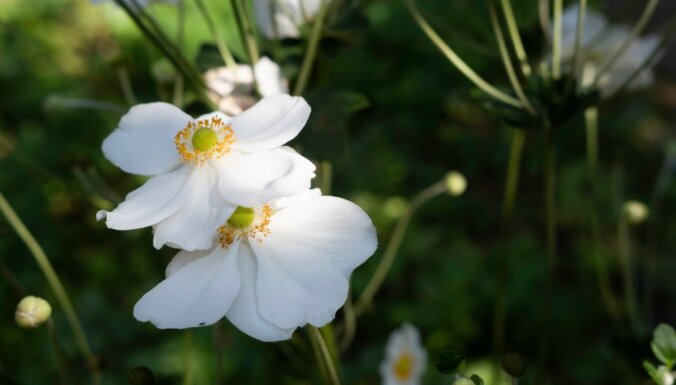
–
Hubei Anemone ‘Bressingham Glow’. Semi-double dark pink flowers. The flower stalks reach a height of about 80 centimeters. Delight with its beautiful flowers from mid-August to October.
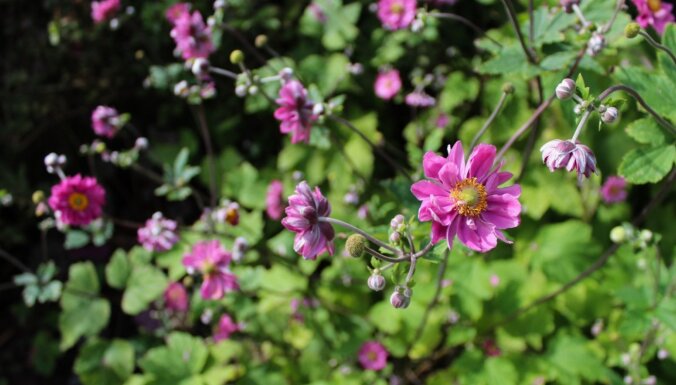
–
Hubei Anemone “Pink Saucer”. Light pink flowers, inflorescences reach a height of 80 centimeters to one meter. It blooms from August to the end of September.
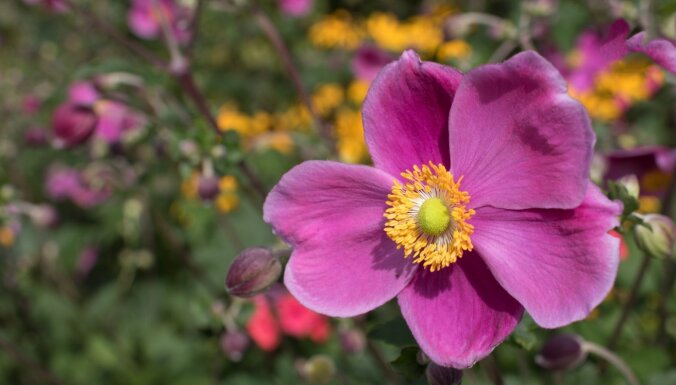
–
Hubei Anemone “Hadspen Abundance”. Form a gorgeous flower with different shades of pink petals. The flower stalks reach a height of 120 centimeters. It blooms from early August to October.
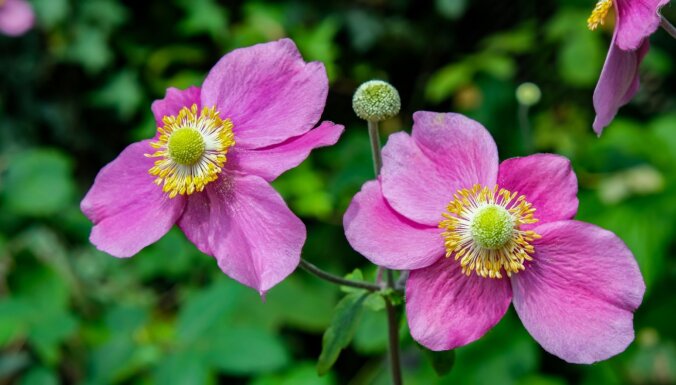
–
In creating the article, information from the “Puķu lauki”, “Blīdene” nursery and from the portal “The Spruce” was used.
–
